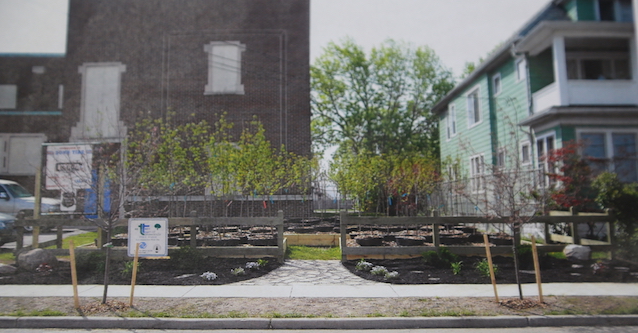On Oct. 12, 2006, Mother Nature dropped a winter storm that would change the landscape of the Town of Tonawanda, New York, for decades. The premature storm dumped 24 inches (61 cm) of snow on the town, damaged 1,600 trees in the town’s right-of-ways — in some cases, wiping out entire city streets — and left the town with a $26 million cleanup project.
In the months that followed, Town of Tonawanda Superintendent of Highways William Swanson and Forestry Supervisor Jack Schifferli evaluated each street to determine which trees could be saved with proper pruning, and which trees needed to be removed.
“We are very stringent with the trees that we take down,” says Schifferli. “Public safety and liability are our top priorities. I tell residents that I will make their streets look nice, but I’m not going to take trees down if it’s not justified.”
Relying heavily on grant money and local fundraising efforts, Swanson and Schifferli began to formulate a plan to replant their town.
Re-Tree Tonawanda
Swanson and Schifferli secured two grants totaling $51,500 to establish a tree farm outside the Boys and Girls Club in the Riverside neighborhood. The grant was used to cover the cost of stump grinding, topsoil and tree planting. From these efforts, the Re-Tree Tonawanda program was born. Local businesses also aided this program with donations of supplies and materials. Under the supervision of adult volunteers, Boys and Girls Club members between the ages of 10 and 12 help plant, prune and water the treelings raised at the tree farm.
“When we first started the program, the General Motors power plant on River Road gave us permission to bring the kids over to their facility to teach them how to prune the trees,” says Swanson. “We didn’t want them to learn in front of someone’s house, so GM volunteered the plant’s landscaping as our training grounds. We are very grateful for their generosity.”
The treelings are allowed to mature for three years before they are relocated to their permanent homes in areas of the town marked for beautification efforts.
Schifferli says that over the past decade, hundreds of volunteers have donated time and resources to the Re-Tree program. Proving that amid the storm’s devastation, a strong sense of environmental conservation and pride grew within the community.
Tracking progress
In an effort to prevent widespread devastation caused by weather, pests or diseases from striking again, Schifferli methodically selected diverse varieties of trees and mapped out where each one would be planted based on its characteristics. For example, how well could the tree stand up to damage from deer and rabbits? Would the tree be exposed to road salt? How much room did the tree need to mature? How resistant was the tree to insects and diseases?
“About 56 percent of the trees in the Town of Tonawanda are silver maple,” says Schifferli. “We started mixing up our varieties in case Dutch elm disease or emerald ash borer comes through. Now, we have 30 different varieties, including zelkova, pear, plum and cherry. As we replanted each street, we used three different varieties. We put in A, B and C so if another disease ever comes through, it will only hit every third house instead of wiping out the whole street.”
Schifferli has also developed a system for tracking and monitoring each tree within the town’s 5-square-mile (12.9 km2) radius.
“Using the global positioning system on an iPad, we punch in the numerical address at our current location,” explains Schifferli. “Then we can document the type, condition, diameter and height of the tree. We also keep track of residents’ work orders and the maintenance performed on each tree. When we did an inventory of our trees last year, we found that of the 22,696 trees in the town, only 11 needed to be removed.”
This type of stringent documentation is uncommon for a municipality, but Schifferli knows that his record keeping will pay off if a natural disaster strikes again.
“The biggest problem we had with the storm in October 2006 was that we couldn’t demonstrate the value of the tree damage. We invested more than $26 million to replant and clean up the town — and that was just how much it cost to do the work. It didn’t include the value of the trees and the signs,” says Schifferli. “Now we can assign a value to everything. We know that the trees in the right-of-way of the Town of Tonawanda have a value of $77.2 million. If there is a storm and a tree falls down, we know how much the tree is worth. We have a value, which is huge for grant and funding purposes.”
Growing accolades
The Town of Tonawanda’s efforts — spearheaded by Swanson and Schifferli — have earned the municipality a “Tree City USA” designation for 19 years in a row. In order to qualify, a town must have a documented community tree ordinance, a community forestry program with an annual budget of at least $2 per capita and an annual Arbor Day observance and proclamation.
In addition, the Town of Tonawanda has received the “Tree City USA Growth Award” and the Boys and Girls Club of New York Community Service Award.
Schifferli is proud of the Re-Tree program and has dedicated his career to restoring the town’s once canopy-lined right-of-ways.
“I’ve been doing this for more than 30 years now,” said Schifferli. “I put a lot of my own time into this without compensation because I want it right and I want it safe. My parents live here. My kids live here. My wife’s parents live here. I grew up here. I’m very passionate about bettering this community.”
